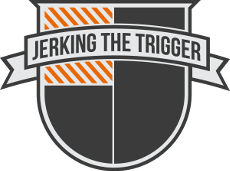Blue Force Gear’s Ten-Speed line of pouches set a new bar for compact and lightweight performance. Then they raised that bar with the Helium Whisper attachment system that lightened the Ten-Speed line even further. One the pouches that benefited the most from all of these efforts to lighten the load is the Ten-Speed Ultralight Dump Pouch. It may be the lightest and most compact dump pouch on the market.
Overview
The Ten-Speed Ultralight Dump Pouch utilizes the hallmark of the Ten-Speed line, heavy duty elastic, to retain the ultralight rip-stop nylon dump pouch. It utilizes the revolutionary Helium Whisper attachment system and only takes up 2 columns and 2 rows of MOLLE real estate. It is only 3” x 3.5” x 1” when it is in the closed position.
The dump pouch is stuffed inside the elastic pouch and can be deployed by pulling a webbing tab that hangs below the pouch. The pouch can be stuffed fairly carelessly back into the pouch, but it will be more compact and the pull tab will be more accessible if you take some care when you repack the pouch.
The dump pouch has a draw string closure that is mounted in such a way that the pouch can be cinched shut with just one hand. It will hold 8 or 9 AR-15 magazines if you really stuff it, but when you just dump your empty mags without paying much attention, it holds 6 or 7 without putting up much of a fight.
Many dump pouches take up a lot of space, even when they are folded. The Ten-Speed Ultralight Dump Pouch is designed to be forgotten until you need it. Its small size and 61 gram weight mean that you will never know it is there until you have to deploy it.
Observations from Use
This dump pouch follows the formula that I like for dump pouches. It should be made from flexible material and hang down below its mounting point. If a dump pouch is made to be too rigid or has a fixed mounting point on the back of the pouch, your gear will pop out of the top when you move. Using flexible material and mounting the very top of the pouch allows the pouch to move freely with its contents rather than letting its contents move freely within it (right up until they bounce out of the pouch).
You will have a hard time getting anything to accidentally come out the top of this pouch unless it is grossly overloaded. It is so flexible and swings freely enough that it just about becomes one with its contents. You can run, jump, roll, and crawl and it will retain its contents even with the pouch opened all the way.
The opening of the dump pouch has no reinforcement to keep it open so it tends to sag into a closed position. Once there is a magazine or two in the pouch, it tends to open up a bit. This is generally a non-issue since reloads with retention should generally not be attempted when speed is of the essence but it will be an adjustment for some who are used to dump pouches with broad openings.
I have used the Ten-Speed Ultralight Dump Pouch mounted a few different ways in a few different locations. The Helium Whisper attachment system attaches to MOLLE webbing easily but it also works well as belt loops. The rubbery and slightly textured material really locks the pouch in position when your belt is tightened. It works very well mounted on a MOLLE belt. I like to position it centered on the back or pushed slightly to the support side. It also works well mounted to the support side of a chest rig or plate carrier.
The uses for a compact, lightweight pouch like this aren’t limited to the range. I used it to hold a water bottle on my pack’s hip-belt on a hike. It swings a bit but it didn’t really bother me. In fact, it worked so well in this function that I hope Blue Force Gear will consider making a smaller, water bottle sized version. It could also be used as a forage pouch for things that you find along the trail like tinder or wild edibles. It is a great choice for any application where you might unexpectedly need some additional storage (hiking pack, EDC bag, etc.).
Some people have voiced concerns about the durability of the lightweight rip-stop nylon that the pouch is constructed from. I haven’t seen any ripping, tearing, or holes develop in the time that I have been using mine and I suspect that the rip-stop material will limit the damage in the event that there is a tear. Only time will tell how it holds up and in my time with the pouch, it has held up well.
Wrap Up
This is probably the ultimate dump pouch for those who don’t always need or use one. There are other dump pouches that may be easier to use if you use one constantly. However, if you want one that can be mounted and forgotten about until those rare times that you use one, the Ten-Speed Ultralight Dump Pouch is definitely what you are looking for.
Of course, the same features that make it great for part-time users, make it a great choice for anyone. It is just smaller and lighter than anything else that you are going to find and, in this case, smaller and lighter is better. It also happens to have a great form factor that keeps it both compact and very functional.
When a pouch is smaller and lighter than its competition while still offering the same functionality, you call that “better.” Check out the Ten-Speed Ultralight Dump Pouch on BlueForceGear.com.






















